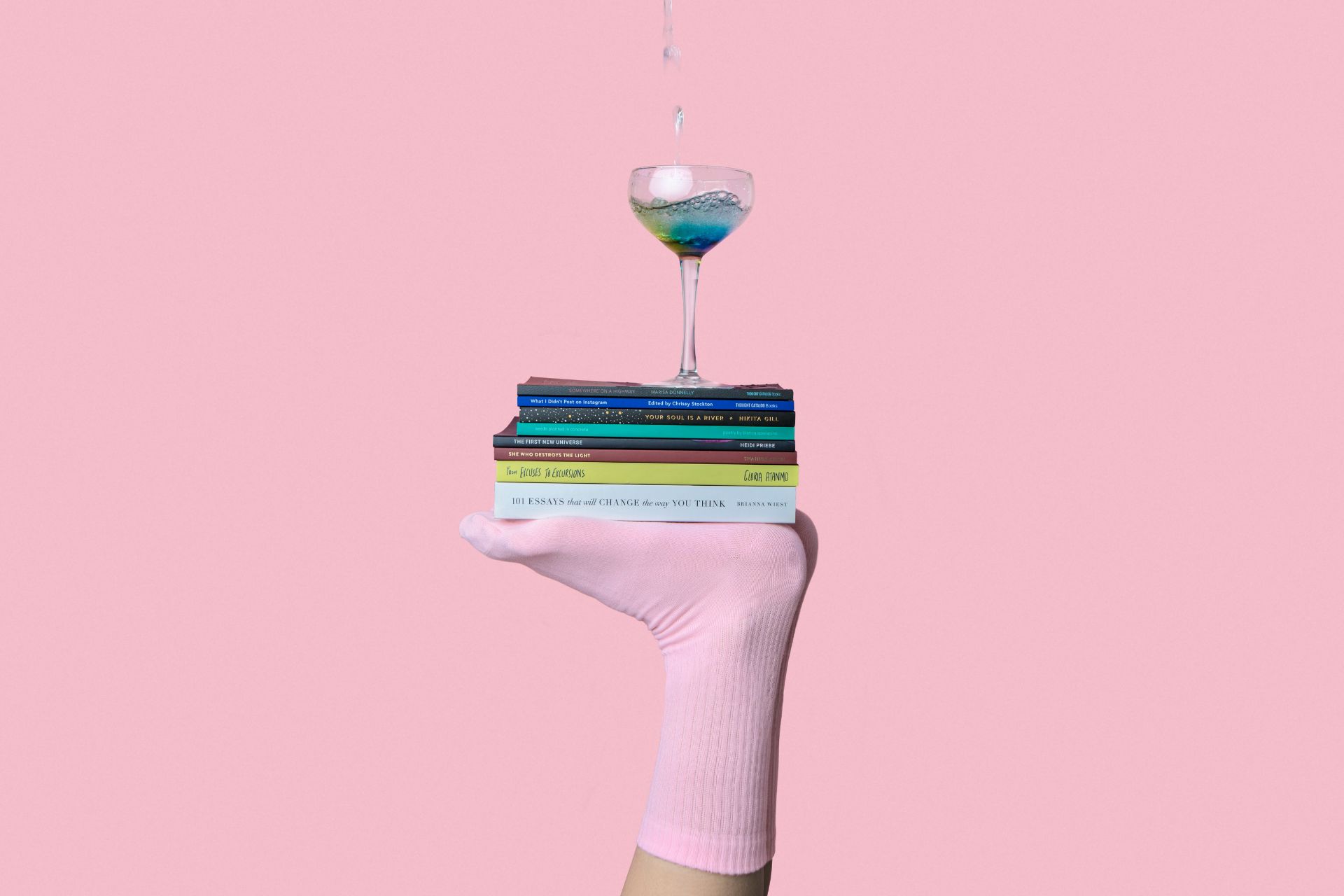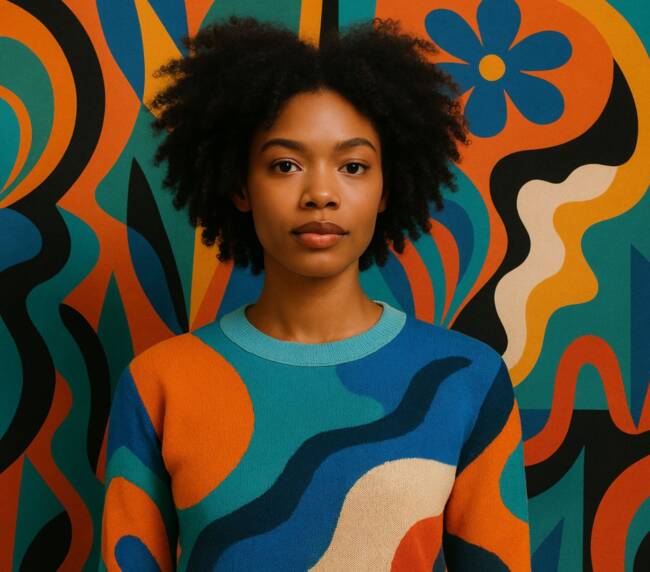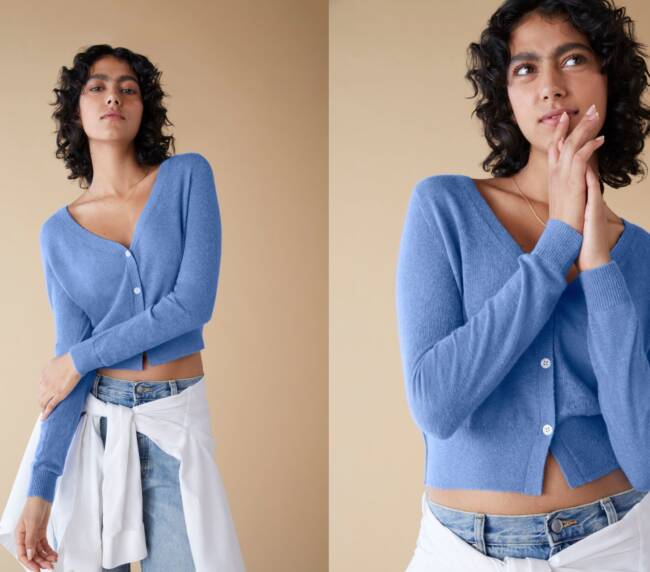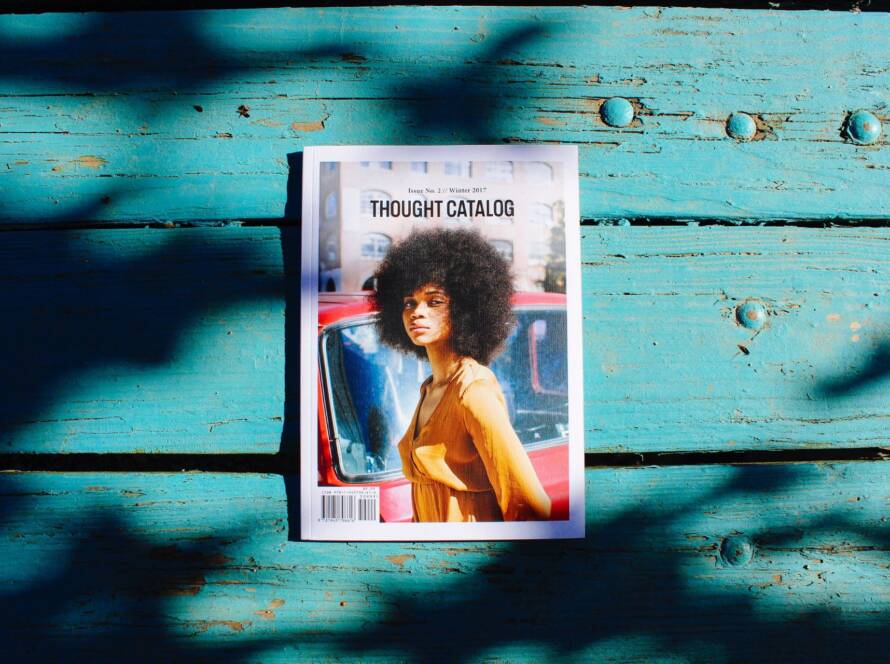AI is quickly becoming part of the post-production toolkit, helping teams streamline image retouching, automate repetitive tasks, and move content to market faster.
Some brands are even publishing AI-generated content on their PDPs – but as experimentation grows, it’s worth keeping in mind where technology excels and where human expertise still leads.
As knitwear designer and AI artist Yekaterina Burmatnova writes, “There’s still one thing no machine can replicate: a designer’s eye. That quiet, sharpened intuition. The ability to see, feel, and decide.”
The same applies to image retouching. AI can process pixels – but it can’t feel texture, sense emotion, or know when an image simply feels right. The strongest results come from balance: AI for efficiency, and people for their creative judgment and eye for detail.
Where AI Supports Image Retouching Workflows
Let’s start with where AI makes the biggest impact:
Efficiency and speed
AI can automate repetitive edits like wrinkle cleanup and background removals – turning hours of work into minutes. AI tools can also repurpose stills into motion assets, helping teams produce more content, faster.
Consistency at scale
By applying standards of color, tone, and cropping, AI can keep large batches of assets visually consistent. Some tools can also flag off-brand imagery before it goes live, supporting a unified look across every channel.
Cost-efficiency
Automating routine post-production tasks like resizing, tagging, or reformatting reduces manual labor and frees up in-house teams to focus on higher-value creative work.
Smarter pre-production
AI speeds up planning by generating shot lists, pulling product data, and creating visual references for inspiration. This can result in more time-efficient shoot days and clearer creative direction.
Creative planning and ideation
Brands are experimenting with AI to visualize concepts – generating potential shoot locations, lighting setups, or editorial environments. These quick visuals help teams pitch ideas, plan production needs, and decide where real shoots are worth the investment.
Why Human Retouching Matters More Than Ever
Yes, AI delivers efficiency, but true creative craft still belongs to people. Here’s where humans make all the difference in adding depth and authenticity to your imagery:
Brand tone and nuance
A “real” retoucher understands how to translate brand identity through visual details like material integrity, natural skin detail, and color accuracy. They know how an image should feel for a particular brand, adapting their approach to match its mood, audience, and message in ways AI can’t replicate.
Capturing authenticity and emotion
Details such as the way light interacts with velvet versus cashmere, the emotional energy in a portrait, or the right framing of a hero shot all demand artistic judgment, depth of skills, and an intangible understanding of what connects with people. An experienced retoucher can pick up on those special nuances that make your imagery beautiful and authentic.
Avoiding the “auto-flatten” look
AI-only workflows can generate over-corrected, homogeneous results that lack soul or authenticity. Humans bring restraint, preserving natural texture and imperfections that keep imagery believable and true to life.
The Hybrid Workflow: How AI and Humans Can Work Together
At VMG, our preferred approach to retouching is a hybrid one: let AI handle the heavy lifting of technical edits, and let humans apply the finesse, tone, and brand “feel” that define the final image. Here’s an example of how it can work.
- AI pre-process: Use AI to manage bulk edits such as wrinkle cleanup, background removal, and exposure correction – ideal for high-volume assets.
- Human refinement: Skilled retouchers take over for hero shots, texture adjustments, and skin treatment that preserve brand integrity.
- Quality control: A final human review ensures each asset meets brand standards and creative goals.
- Feedback loop: Learnings from human insights feed back into the AI data set, improving efficiency and output over time.
This hybrid approach means you can scale your retouching workflows with speed and consistency – without sacrificing quality or the integrity of your brand.
The Bottom Line: AI isn’t a Substitute for Human Artistry
Introducing AI to your image retouching can bring speed, scale, and consistency to production – but it’s not a substitute for human artistry. The most impactful results come from collaboration: AI handling the heavy lifting, and people refining the details that define emotion and brand integrity.
When you strike that balance, you get the best of both worlds – quality content that’s fast, cost-effective, and unmistakably on-brand.
Thinking about adding AI into your image retouching process? We’ve been seeing what’s working across leading brands, and would be happy to share how to best implement it into your workflow. Get in touch if you’d like to learn more.
Nasreen Shaikh
Nasreen is a dedicated content marketer with a talent for creating compelling and engaging stories. She is currently driving VMG Premedia's content marketing efforts to inform, inspire, and resonate with diverse audiences.








